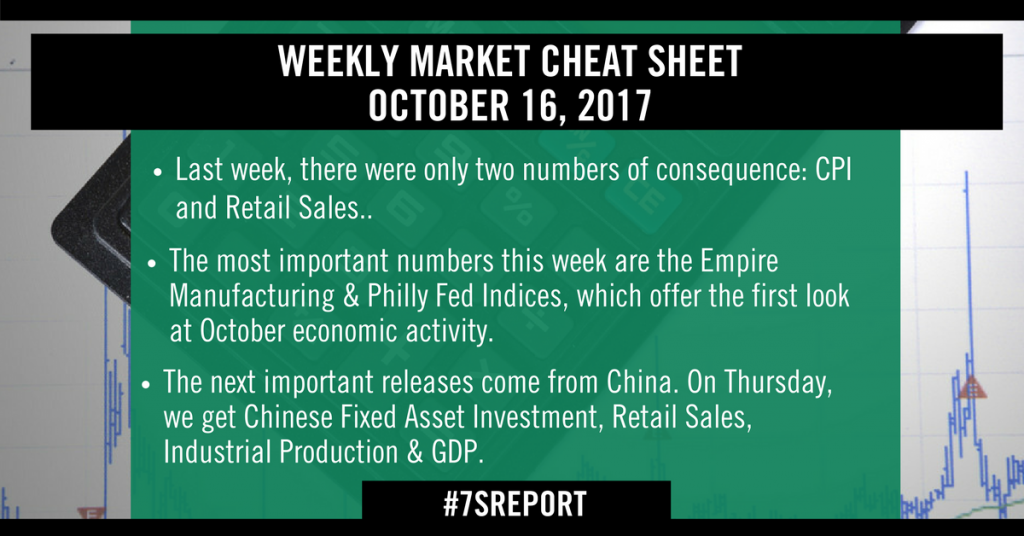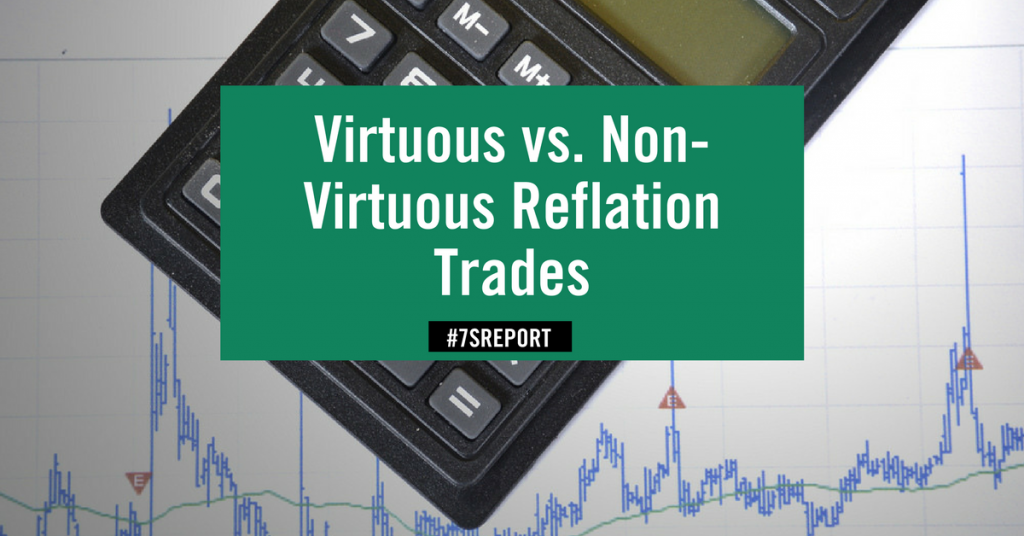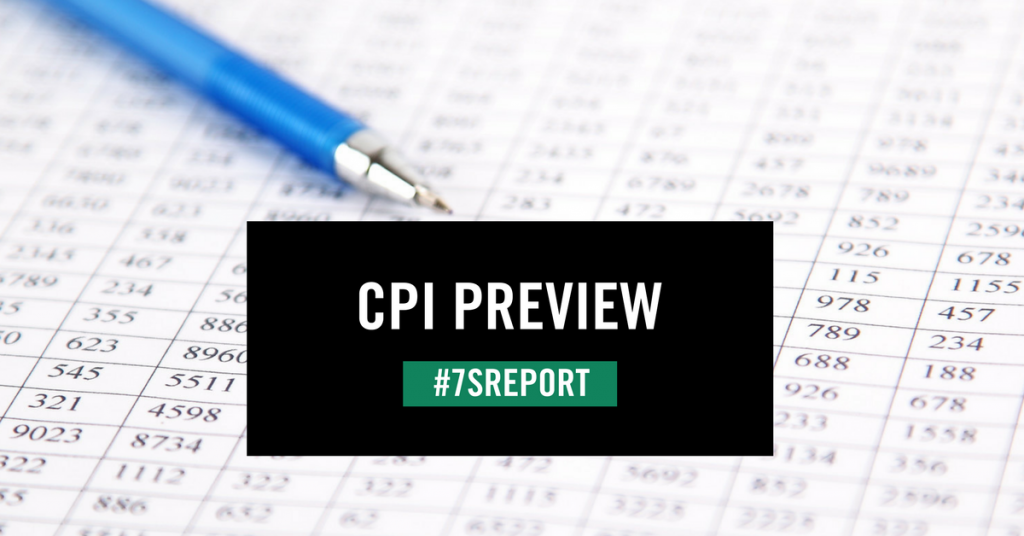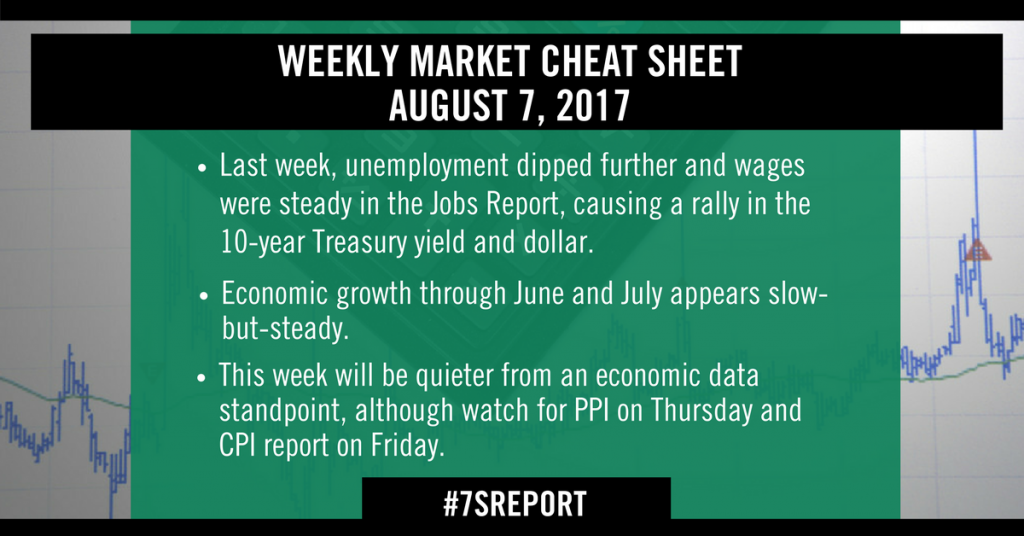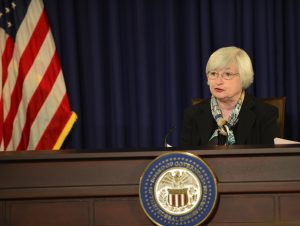
The FOMC raised the fed funds rate 25 basis points, as expected.
The FOMC raised the fed funds rate 25 basis points, as expected.
Below is an excerpt from the full Sevens Report, focusing on the takeaways from the March 15, 2017 Fed meeting. The Sevens Report is everything you need to know about the markets in your inbox by 7am in 7 minutes or less. Sign up for a free 2-week trial today!
Takeaway
The results of this meeting largely met our “What’s Expected,” scenario, as the Fed did hike 25 basis points, but the median “dots” for the number of hikes in 2017 and 2018 were unchanged at three in each year.
So, the Fed generally met well-telegraphed expectations, and the market took it dovishly (as you’d expect). Futures doubled their pre-Fed gains while the dollar dropped sharply and bonds rallied.
Yet, despite the initial moves, I don’t see Thursday’s Fed decision as a bullish game changer, simply because unless we get a surprise downturn in economic data (which won’t be good for stocks), risk still remains for more rate hikes going forward.
So despite the somewhat confusing Fed tactic of rushing to hike in March, only to keep the statement and projections dovish, I’m sticking with my expected market reactions… Stocks rallied, but this isn’t a bullish game-changer; bond yields dropped but it’s likely not a reversal in the uptrend in yields (same for the dollar), and gold rallied and while we may not see a sustained rally just yet, the outlook is becoming more favorable.
Going forward, the market still expects two more hikes in 2017, with June being a close call.
CPI
- February CPI rose 0.1%, meeting expectations.
- Core CPI rose 0.2%, also meeting expectations
Takeaway
CPI inflation data largely met expectations on March 15th and the numbers likely didn’t have any effect on the FOMC decision. However, the important point here is that PPI and CPI both confirmed inflation pressures continue to build. Case in point, the year-over-year headline CPI rose to 2.7%, which is a five-year high, while core rose to 2.2%, above the Fed’s stated 2% goal.
From a practical investment management standpoint, this continues to underscore the need for investors to make sure they are positively skewed to inflation for medium- and longer-term accounts (i.e. more equity exposure, reduced long-term bond exposure, TIPS exposure, select hard asset exposure).
Retail Sales
- February retail sales rose 0.1%, meeting expectations.
Takeaway
There was some noise to cut through in this report, because while the headline met expectations, the more important “control” group (retail sales less autos, gas and building materials) rose just 0.1% vs. (E) 0.3%.
Again, we and others look at the control group because it’s the best measure of discretionary consumer spending. And while that number did miss estimates, the January data saw a big, positive revision, as the control group went from up 0.4% in January to 0.8%. All in all, the numbers were basically in line.
From a market standpoint, this retail sales number still leaves a large and uncomfortable gap between sentiment data (like the Empire Manufacturing Survey and PMIs, which are very strong) and actual, hard data.
Case in point, the Atlanta Fed GDP Now estimate for Q1 GDP fell to 0.9%—hardly robust growth.
Yes, for now the expectation of better growth is off-setting lackluster hard data, but at some point the hard data needs to start to reflect these high sentiment surveys.
This FOMC review is part of the full Sevens Report. For a monthly cost of less than one client lunch, we firmly believe we offer the best value in the independent research space—and you can get two weeks free by signing up for our trial version. Try it today and see what a difference the Sevens Report can make for you every morning.

